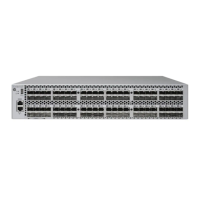Each volume name can contain wild-card characters (*) or alias characters (?). The asterisk
(*) matches 0 to 7 characters, and the question mark (?) matches any single character. For
example:
Reports on ALL volumesDSAP *
Reports on the specified volumesDSAP ($DATA1,$SYSTEM)
Reports on all volumes beginning with the letter DDSAP $D*
Reports on all volumes beginning with $DATA and followed by a single
character
DSAP $DATA?
HELP
displays a brief description of DSAP and its options.
options
can include report-options, detail-selection-options, EXTENTCHECK, and
WORKFILE. For descriptions of all these options, see DSAP Options (page 93).
The report-options and detail-selection-options parameters can follow
volume-specification in any order. Using commas to separate options is optional. If no
options are specified with volume-specification, the DSAP utility only produces the
summary report. The summary report is printed with each report—except the SHORT report.
report-options
ANALYSIS
BYSUBVOL
BYUSER
DETAIL
FILESIZE
FILESPACE
FREESPACE
NEWFORMAT (G-series only)
SHORT
SPACE
SUMMARY
TERAFORM (G-series only)
Each report-option specifies the type of report or set of reports created.
detail-selection-options
AGE { [ OVER ] number | UNDER number }
AUDITED
BROKEN
CRASHOPENED
DEALLOC number
ENSCRIBE
EXPIRED
LICENSED
OPENED { [ OVER ] number | UNDER number }
PARTITIONED
PROGID
ROLLFORWARD[NEEDED]
SEPARATE
SHOWNAMEMAP
SHOWPATH
SIZE { [ OVER ] number | UNDER number }
SQL
TEMPORARY
UNEXPIRED
UNUSED number
USER [ group-name.user-name ]
[ group-number , user-number ]
92 Disk Space Analysis Program (DSAP)
